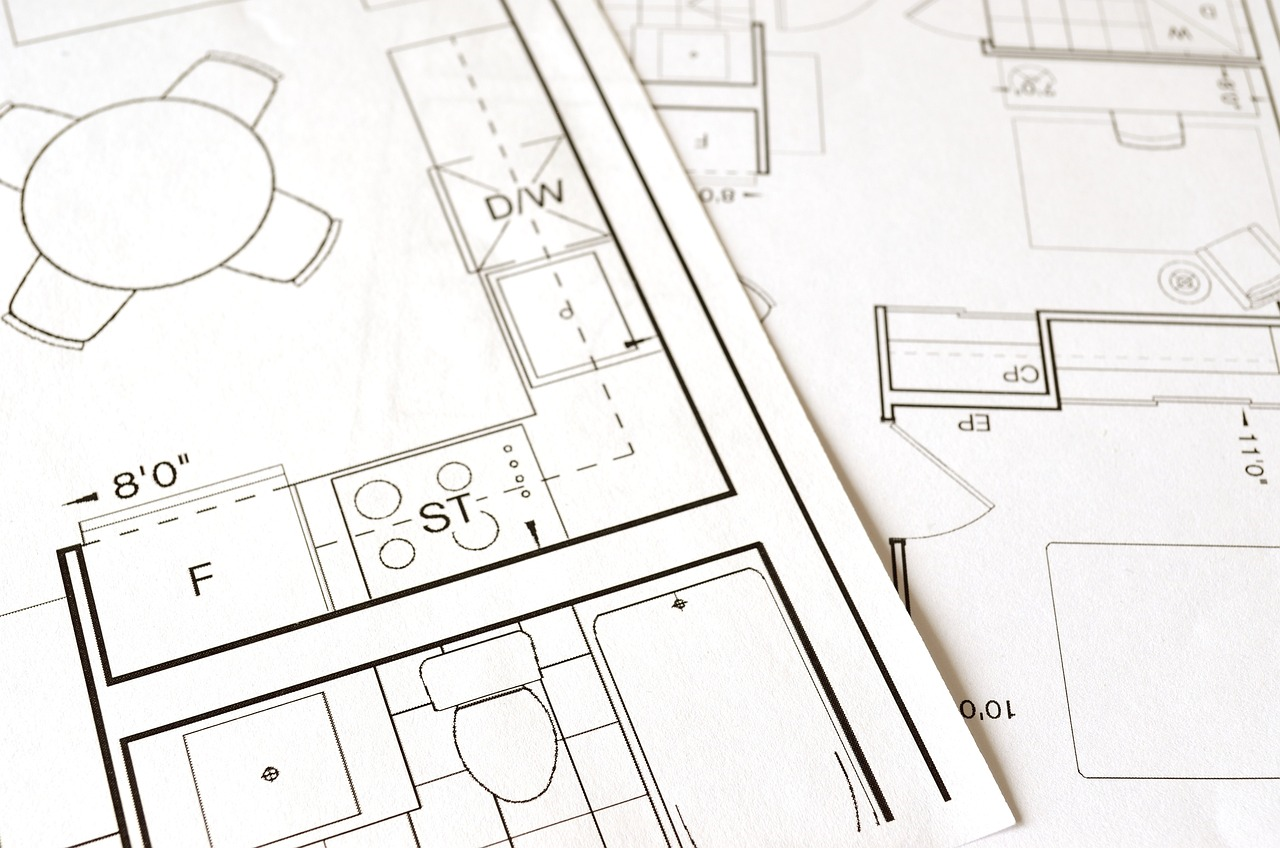趣味を思い切り楽しむなら注文住宅が一番!注文住宅に関する豆知識を紹介

注文住宅に関する豆知識として、建築家や設計士とのコミュニケーションが重要です。自分の希望や要望を正確に伝えることで、理想の住まいを実現することができます。予算や工期、法規制なども考慮して計画を立てる必要があります。 さらに地域の気候や風土に合わせた設計も重要です。地域によって異なる気候条件や景観を考慮し、快適で美しい住まいを実現するためには、地域性を踏まえた設計が欠かせません。 注文住宅は、自分らしい生活を実現するための最良の選択肢です。自分の趣味やライフスタイルに合わせて設計された住まいであれば、日々の生活がより充実し豊かな時間を過ごすことができるでしょう。
-
趣味を思い切り楽しむなら注文住宅が一番!注文住宅に関する豆知識を紹介
- ガレージ付きの注文住宅は車好きに最適
- サーフィンを満喫するなら海の近くの注文住宅で決まり
- 注文住宅なら自宅を映画館のように仕上げることも可能
- これからの注文住宅に欠かせない安全設備とは?
- 注文住宅に安心感を求めるなら木がお勧め
- コンパクトな注文住宅の方が掃除は楽
- 3階建ての注文住宅にエレベーターは必要?
- 広い庭やベランダがある注文住宅は開放感が凄い
- 注文住宅に置くソファやテーブルはこだわるべき?
- 注文住宅の住み心地を無料で試すことはできる?
- 洋服の数が多い場合は収納の多い注文住宅が良い
- 夫婦の時間を大事にするなら景色の良い注文住宅
- 家族が多い場合は広めのリビングがある注文住宅にするべきなのか?
- 友人をたくさん招待する人は注文住宅の間取りを工夫した方がいい?
- 注文住宅に最適な塗り壁の選び方とそのメリットについての解説
- 注文住宅を依頼する際の建築士の選び方とそのメリットについて
- 注文住宅価格高騰の理由とその抑制方法に関する知識
- 注文住宅を安っぽく見せないための実用的なアイデア集
- 注文住宅を建築する際に知っておくべき屋根の種類とその特徴について
ガレージ付きの注文住宅は車好きに最適
自動車をこよなく愛する人々にとって、ガレージはただの車庫ではありません。 それは愛車を守り、メンテナンスを行い、時には趣味の空間と化す大切な場所です。 そんな車好きのためにデザインされたガレージ付きの注文住宅が注目を集めています。 注文住宅ならではのメリットは自由度の高さにあります。 家全体のデザインはもちろん、ガレージの大きさや配置、機能性を自分のライフスタイルに合わせてカスタマイズすることが可能です。 車を所持することは、単に移動手段を確保するだけではなく、ライフスタイルの一部として楽しむことができるようになります。 家族との時間を大切にしながらも、自分だけの趣味の時間を持ちたいという方には、このガレージのある注文住宅が最適です。 メンテナンスエリアを設けたり、愛車を眺めながら寛げるスペースを作ったりすることで、毎日の生活に潤いを与えます。 また安全性の面でも、大事な車を万が一の事態から守るために、セキュリティシステムを導入することも可能です。 注文住宅は家族全員のライフスタイルを反映させることができますが、特に車好きの方には、自分だけのガレージのある家を建てることで、より一層愛車との時間を充実させることができるでしょう。 ガレージ付きの注文住宅を選ぶことは、趣味を大切にしながらも、日々の生活をより豊かなものにするステップです。
サーフィンを満喫するなら海の近くの注文住宅で決まり
サーフィンを愛する人々にとって、波の音を聴きながら生活することは夢のような体験です。 毎朝目覚めて、広がる青い海と波を眺め、いつでも波に乗れる環境こそがサーファーにとっての理想的な暮らし方でしょう。 そんな贅沢を叶えるため、注文住宅は最適な選択肢です。 注文住宅であれば、サーフィンの趣味を最大限に生かした家造りが可能になります。 例えば、海を一望できるリビング、サーフボードをしまう専用のスペース、身体を温めるための室外シャワーなど、ニーズに合わせた機能を備えた住まいを設計できます。 さらに、環境に配慮した自然エネルギーを取り入れたり、耐久性に優れた素材を選ぶことで、長期に渡り海を感じながら健康的な生活を続けることができます。 サーフィンと共に暮らすライフスタイルを追求する方々は、注文住宅で自分だけの理想を形にすることが可能です。 自然と調和し、心地よい空間で海と一体になる暮らしを実現するために、プロフェッショナルな建築家やデザイナーとしっかりと話し合いながら計画を進めていくことが大切です。 海辺でサーフィンを楽しむ日々は想像以上の喜びをもたらしてくれるでしょう。
注文住宅なら自宅を映画館のように仕上げることも可能
映画好きな人々の夢ともいえる家、それが自宅を映画館仕様にできる注文住宅です。 あなたの手で、心地よい映画鑑賞空間を創出することが可能になります。 リビングに大画面のプロジェクターを設置したり、防音設備でまわりの音をシャットアウトし、映画館さながらの迫力ある音響システムを導入することにより、自宅にいながら本格的な映画体験が実現するのです。 また、注文住宅では間取りや内装、照明に至るまで細かな部分のカスタマイズができるため、自分だけの特別な空間を演出することも夢ではありません。 映画を見るための特別な部屋を作ることにより、家族や友人を招いての映画会も豊かなコミュニケーションとして楽しめます。 自宅で過ごす時間がより特別なものになるよう、細部にまでこだわった家づくりをしませんか。 注文住宅ならではの自由度とプロフェッショナルの提案が、あなたの理想とする映画館のような空間を叶えます。 いつでも自分だけのプライベートシアターで、日常を忘れ心の底から映画を堪能できる家、それが注文住宅で実現する映画館のようなおうちです。
これからの注文住宅に欠かせない安全設備とは?
住まいを構えるにあたって安心と安全は大前提です。 特に注文住宅の場合、その家族のライフスタイルやニーズに合わせた設計がなされるため、安全設備にも一層の注意が必要となります。 近年の自然災害の多発に対しても備えるために、注文住宅では耐震性に優れた構造やセキュリティ設備が求められています。 例えば耐震等級を最も高いレベルで設計された住宅や、転倒を防ぐための家具固定器具が挙げられます。 また、防犯の観点から玄関ドアの二重ロックシステムや防犯カメラの設置といった安全設備も重要です。 さらに、非常時に備えての防災セットの常備や、太陽光発電システムによる自立型の電源確保も検討されています。 これらの設備を組み合わせることで、万一の事態への対応力が高まり、家族の安全を守ることができるでしょう。 一方で、高齢者の居住を想定した場合は、手すりの設置や段差の解消など、生活の安全を支える設備の充実も欠かせません。 未来を見据えた注文住宅では、これらの安全設備を十分に考慮し計画することが望まれています。 そのためには、専門の建築家としっかりとした打ち合わせを行い、家族のニーズに合った最適な安全対策を講じることが大切です。
注文住宅に安心感を求めるなら木がお勧め
新たな住まいを建てる際に、注文住宅は自分たちの理想を形にする絶好の機会です。
注文住宅の設計では耐久性やデザイン性が重要視されますが、それに加えて安心感を感じることも大切です。
木を主材料とする住宅は、見た目にも温かみがあり、住む人に安らぎを与えます。
木材は地震などの揺れにも弾力的に対応し、日本の気候や地形に適した素材です。
そのため、安心して暮らすことができる家を目指すなら、木を積極的に取り入れることをお勧めします。
また、木材は環境にも配慮した選択肢であり、持続可能な社会づくりに貢献する材料と言えるでしょう。
自分だけの空間を作る注文住宅において、安心感を感じるためには、耐震性やエコフレンドリーな素材選びが大切です。
木のぬくもりが心地よい住宅は、住む人の心にも余裕をもたらし、豊かな生活へと導きます。
自然素材の魅力を生かして、心安らぐ空間を実現することも注文住宅の大きな魅力の一つです。
この点を忘れずに、あなた自身にとって価値のある住まいを計画し、充実した生活を送ってください。
コンパクトな注文住宅の方が掃除は楽
注文住宅を購入する際には、将来的なライフスタイルの変化を考慮し、どれだけの広さが必要か考えることが大切です。
コンパクトな住宅の魅力の一つに掃除のしやすさが挙げられます。
広い家では掃除の時間はもちろんのこと、掃除用具を使う範囲も広がりますから、その準備や片付けにも時間を要します。
一方、コンパクトな注文住宅では、効率的な収納計画を立てることで限られたスペースを有効利用できるため掃除もスムーズに行えるのです。
また、物が少ないぶん掃除する際の移動や整理の手間も減少します。
床面積が狭い分、フローリングの拭き掃除やカーペットの掃除機かけも楽になり、時間を有効に使えるようになるでしょう。
生活の質を上げるためにも、注文住宅を計画する際には掃除のしやすさを考慮したコンパクトな設計を選ぶのが賢明です。
購入後の生活スタイルを想像し、メンテナンスのし易さを意識することが大幅な時間の節約に繋がることでしょう。
皆さんも家づくりを考える際は、コンパクトで掃除が楽な住宅設計について検討してみてはいかがでしょうか。
3階建ての注文住宅にエレベーターは必要?
暮らしに合わせた家作りをする注文住宅では、将来のことを考えた設備選びが重要です。
特に3階建ての住宅を建てる場合、エレベーターの設置を検討する声があります。
例えば、高齢の家族がいたり、足腰に不安がある人が生活する場合など、階段の昇降が生活の質に大きく影響します。
さらに、家具や荷物の移動も簡単になるため、エレベーターは利便性を高める要素として、多くの人にとって魅力的な設備の一つです。
しかし、エレベーターは設置コストや維持費、スペースの確保など、様々な側面を考える必要があります。
例として、予算の範囲内で高度な設備を取り入れることは、家計に大きな影響を与えかねません。
一方で、メンテナンス計画も考慮に入れなくてはならず、エレベーターを設置することは、将来的な出費も視野に入れるべきでしょう。
家族構成や生活スタイル、将来設計など個々の状況を踏まえた上で、エレベーターの必要性を考えていくことが、注文住宅における快適な暮らしを実現するための一歩です。
注文住宅で理想の住まいを目指す人は、エレベーターを含めた様々な設備について、しっかりとした情報収集と検討を行い、家族全員が快適に過ごせる住環境を整えることが大切です。
広い庭やベランダがある注文住宅は開放感が凄い
注文住宅を手に入れる際、利点の一つとして開放感のある広い庭やベランダなどの屋外空間の充実が挙げられます。
自然に囲まれた環境でのんびりと過ごすことは、都会の喧騒を忘れさせる癒やしの時間を提供します。
注文住宅では、個々のライフスタイルに合わせた設計が可能ですから、屋外と室内が一体化するような設計を選ぶことで、究極の開放感を実現することができるのです。
一日の始まりを爽やかな朝日が照らすベランダで迎えたり、週末には家族や友人を庭に招いてバーベキューやガーデニングを楽しむことも夢ではありません。
さらに、広い庭は子どもたちが思いのままに走り回る遊び場となり、成長に必要な自然体験の場を提供します。
自分だけの特別な空間を設計することで、生活に彩りと豊かさを加えることが期待できます。
心地よい風を感じながら過ごすひとときは、日々の疲れを忘れさせ、心身ともにリフレッシュさせてくれることでしょう。
開放感を求めるならば、ぜひ注文住宅の可能性を探ってみると良いでしょう。
注文住宅に置くソファやテーブルはこだわるべき?
注文住宅を建てる際、ソファやテーブルのような家具選びにもこだわりたくなるものです。
オーダーメイドの家というのはただの住宅以上の価値があり、そこで過ごす時間の質を高めてくれるからです。
日々の生活の中で長時間を過ごすリビングは、ゆったりとくつろげる場にしたいものです。
快適なソファはそのために欠かせないアイテムであり、体を支える重要な役割を担っています。
また、家族や友人が集まる場として機能するテーブルも、使い勝手やデザインにこだわりたい部分です。
注文住宅では、間取りや内装に合わせて最適なソファやテーブルを選ぶことが可能です。
例えば、空間に馴染む色や素材、リビングのサイズにぴったり合った形を選ぶことで、一体感のある美しい空間を実現できます。
さらに、快適さを追求するなら、耐久性に優れた素材や体にフィットする形状のものを選び、長きにわたる使い心地の良さも考慮する必要があります。
総じて、注文住宅においてソファやテーブルを選ぶ際は、長期的な満足度を考慮することが大切です。
自分のライフスタイルに合った家具を選ぶことで、住まいへの愛着が増し、日々の生活がより豊かになるでしょう。
これは注文住宅ならではの利点であり、こだわりの家具選びがその価値を最大限に引き出します。
注文住宅の住み心地を無料で試すことはできる?
注文住宅を建てる前には、その家での生活を想像することが重要です。
実際に住むまで分からないことも多いですが、住み心地をあらかじめ確認する方法があれば安心です。
「モデルハウスでの宿泊体験」や「体感フェアなどのイベント」を活用することで、実際の住空間を試す機会が得られることがあります。
ただし、すべての建築会社がこのようなサービスを提供しているわけではないため、希望する会社がこのようなサービスを行っているか確認する必要があります。
また、完全無料で提供される場合もあれば、実費分を負担するケースも存在するので、その点も事前に調べておくと良いでしょう。
注文住宅を検討する際には、設計の自由度やコストだけでなく、実際に住んだときの快適さも重要なポイントです。
無料で住み心地を試せる機会を見つけた場合は、ぜひ積極的に利用することをお勧めします。
これらの体験を通じて、納得のいく家づくりが実現するでしょう。
洋服の数が多い場合は収納の多い注文住宅が良い
洋服愛好家にとって、クローゼットスペースは生活の質を左右する重要な要素です。
特に洋服の数が多い方の場合、整理整頓を維持するためには広くて機能的な収納空間が不可欠です。
注文住宅を建てる際、自分の持っているアイテムに合わせた収納空間を設計することができるため、ファッションを楽しみつつもすっきりとした住空間を確保することが可能です。
注文住宅ならば、既存の家具やボックスに頼らずに、壁面一面のクローゼットやアクセサリー専用の引き出しなど、洋服を効果的に収納するためのオリジナルデザインが実現します。
生活スタイルに合わせて間取りを決定することも、注文住宅の大きな魅力です。
適切な収納計画と上手なデザインを取り入れることで、快適かつ美しい住環境を実現できるのです。
さらに、衣類を長持ちさせるためには通気性や湿度調整も重要視されます。
このように洋服を大切にする生活を送りたい方には、自分のライフスタイルに合った家づくりができる注文住宅が最適な選択肢と言えるでしょう。
夫婦の時間を大事にするなら景色の良い注文住宅
二人だけの時間を過ごす場所として、注文住宅を選ぶ夫婦は多いです。
共に選んだ家であれば、その家に対する愛着もひとしおで、夫婦の絆がより一層深まることでしょう。
注文住宅を建てる際には景色の良さを優先することで、日常生活に潤いをもたらせることが可能です。
例えば、リビングや寝室の窓から四季折々の景色を眺めることで、日々の疲れを癒せるでしょう。
また、朝食をとるダイニングが庭を望むことで、一日のスタートを爽やかに切る手助けをしてくれます。
さらに、休日には夫婦で庭を眺めながら過ごしたり、バーベキューを楽しんだりと、家自体が夫婦のコミュニケーションを豊かにする空間になり得ます。
注文住宅で重視すべきは、ただ単に建物の機能美だけでなく、そこに暮らす人々の心の豊かさを育むことです。
夫婦それぞれの好みや生活リズムを落とし込みながら、二人らしい住まいを築くことが注文住宅の魅力の一つです。
日々の暮らしの中で育む二人の時間を大切にし、それを支えるのが、景色の良い家なのです。
家族が多い場合は広めのリビングがある注文住宅にするべきなのか?
新しい住まいを計画する際に、家族構成を考慮し、ゆとりを持ったリビングスペースを備えた注文住宅の選択が、掲げられることがあります。
しかし、単にリビングを広めにするだけでなく、将来的な家族の拡大や変化にも対応できる柔軟性も求められます。
注文住宅のメリットは、経験豊富な設計士と相談し、家族一人ひとりのニーズに合わせた家造りを行える点にあります。
たとえば、親世代が同居する場合や子どもの成長に伴い部屋が必要になるなど、家族のライフステージに応じて変遷する住空間の要望にきめ細かく対応可能です。
また、リビングが中心となる家事動線の設計やプライベートなスペースの確保といった機能面でも配慮されます。
広いリビングは家族が集まり、コミュニケーションが活発になる一方で、家具の配置や部屋の利用方法によっては使いづらい空間になることもあります。
注文住宅ならば、そういった問題点を解消し、快適で機能的な家づくりを実現させることができるのです。
最終的には、家族の現在だけでなく未来へのニーズや価値観を深く理解し、住まいの計画を進めることが重要と言えるでしょう。
友人をたくさん招待する人は注文住宅の間取りを工夫した方がいい?
人生において特別なイベントを共有したい時や大切な人を迎える機会は数多くあります。
特に友人を自宅に招待することが多い人は、そのための住宅の間取りに配慮することが望ましいです。
注文住宅ならば、ゲストを迎えるための専用スペースを設けたり、複数人がくつろげるリビングの広さを確保したりと、おもてなしに適した空間作りが可能になります。
招待したゲストが気兼ねなく過ごせるためには、洗面所やトイレの位置にも工夫を凝らすべきです。
例えば、リビングから直接アクセスできるゲスト用トイレを用意することで、プライベートな空間を気にすることなく快適に過ごせます。
また、注文住宅を建てる際には、玄関のデザインにもこだわると、訪れる人に良い印象を与えることができます。
ゲストを迎えることが多い家庭では、音響機器やプロジェクターを設置できるようなエンターテイメントスペースを設けるのも良いでしょう。
食事を共にする機会も多い場合は、広めのダイニングキッチンを計画することで、料理や食事を一緒に楽しむ時間をより豊かなものにできます。
すべての要望を叶えるためには、プロの建築家や設計士と密に打ち合わせを行い、自分たちのライフスタイルに合った最適な間取りを考えていくことが大切です。
ゲストを思いやる心が行き届いた家づくりは、自宅でのひとときをより特別なものにしてくれるでしょう。
注文住宅に最適な塗り壁の選び方とそのメリットについての解説
注文住宅において、理想的な住まいを実現するためには、内装の仕上げの一つである塗り壁が重要です。
この記事では、塗り壁の選び方とそのメリットについて詳しく解説します。
塗り壁は、自然素材から作られることが多く、環境に優しい点が注目されています。
また、湿度調整ができるため、快適な室内環境を保つ役割を担います。
さらに、塗り壁はデザインの自由度が高く、注文住宅の個性的なインテリアを演出することが可能です。
色や質感を変えることで、住まいの雰囲気を大きく変えることができます。
特に注文住宅では、オリジナルの空間を実現するため、塗り壁が選ばれることが多いです。
しかし、塗り壁にはメンテナンスの手間がかかるというデメリットもあります。
そのため、選ぶ際には、生活スタイルに合った素材を選定し、定期的なメンテナンスを行うことが重要です。
このように塗り壁は、注文住宅をより素敵なものにするための重要な要素となります。
注文住宅を依頼する際の建築士の選び方とそのメリットについて
注文住宅を依頼する際には、家づくりを計画する上で自分自身の希望やこだわりを最大限に実現することが重要です。
そこで、頼りになるのが建築士の存在です。
建築士は住宅設計のプロフェッショナルであり、それぞれの家族に適した間取りやデザインを提案してくれる重要なパートナーです。
注文住宅を建てる際には、まず自分たちのライフスタイルや将来的な家族構成を考慮し、それに合った設計をしてくれる建築士を選ぶことが大切です。
建築士を選ぶ際には、まずその方の過去の実績を確認することがポイントです。
実際に手がけた住宅のデザインや機能性を確認することで、その建築士が自分たちの希望をかなえる能力を持っているかを判断できます。
また、設計の初期段階から施工までの工程をスムーズに進めるためには、建築士とのコミュニケーションのしやすさも重要です。
注文住宅は、施主の暮らしをより豊かにするための一大プロジェクトです。
したがって、事前に建築士とじっくり話し合い、納得のいくプランを作成することが肝心です。
家づくりの過程で生じる細かな疑問や要望にも迅速に対応してもらえる、信頼できる建築士を選ぶことで、理想の住まいを実現しましょう。
注文住宅価格高騰の理由とその抑制方法に関する知識
注文住宅の価格が高騰している背景には、いくつかの要因があります。
まず、土地の供給が限られていることが挙げられます。
特に都市部では、魅力ある立地の土地は限られておりそのため価格が上がっています。
次に、建設資材の価格上昇や人件費の増加も影響しています。
これらの要因が重なり、注文住宅の価格が高騰しているのです。
そこで価格を抑制するためのいくつかの方法をご紹介します。
まずは、複数の建設会社から見積もりを取り、比較検討することが重要です。
これにより競争が生まれ、より良い条件を引き出せる可能性があります。
また、設計時に無駄を省き、必要最低限の設備や仕様に絞ることも効果的です。
さらに、土地探しの際は駅から少し離れた場所や新興地域を選ぶことで、土地代を抑制することができるかもしれません。
住宅購入は人生の一大イベントです。
計画的に進め、情報を集めて賢く選択したいものですね。
注文住宅を安っぽく見せないための実用的なアイデア集
注文住宅を選ぶ際、見た目が安っぽくならないようにするためのポイントはいくつかあります。
まず、素材選びが重要です。
高品質な素材を使うことで、全体的な印象が向上します。
例えば、フローリングは複合材よりも天然木を選ぶことで、見た目の高級感を演出できます。
また、色調を統一することも大切です。
家具や内装の色味がバラバラだと、部屋全体がまとまりに欠け、安っぽく見えてしまいます。
次に、照明の選び方も注意が必要です。
柔らかい光を作り出す照明を選ぶことで、空間がより落ち着いた印象になります。
さらに、アクセントを加えることで、注文住宅の個性を引き立てることができます。
例えば、一部分の壁紙を変えることで、視覚的なインパクトを与えつつ、全体の調和を図ることが可能です。
最後に、メンテナンスを怠らないことも重要です。
定期的に手入れをすることで、常に清潔で新しい状態を保つことができ、来客に良い印象を与えます。
これらのポイントを押さえることで、注文住宅を安っぽく見せず、満足のいく住まいができるでしょう。
注文住宅を建築する際に知っておくべき屋根の種類とその特徴について
注文住宅を建築する際には、屋根の種類が重要な要素の一つとなります。
屋根は建物の外観や耐久性、断熱性能に大きく影響を与えるため、選択が重要です。
例えば、一般的な屋根の種類には、瓦屋根や金属屋根、スレート屋根などがあります。
それぞれの種類には異なる特性があり、それに応じたメリットとデメリットがあります。
瓦屋根は、耐久性が高く、和風の注文住宅に良く合います。
しかし、重さがあるため、構造への影響を考慮しなければなりません。
金属屋根は、軽量で耐久性があり、モダンなデザインに向いています。
また、断熱性能も高いので、エネルギー効率を重視する方にも適しています。
スレート屋根は、美しい外観と比較的手頃な価格が特徴で、多くの注文住宅で選ばれています。
ただし、割れやすいというデメリットもあります。
このように、自分の注文住宅に最適な屋根を選ぶためには、デザインや機能、予算を考慮した上で、しっかりと選ぶことが重要です。
最適な屋根を選ぶことで、快適で満足のいく住まいを実現しましょう。


